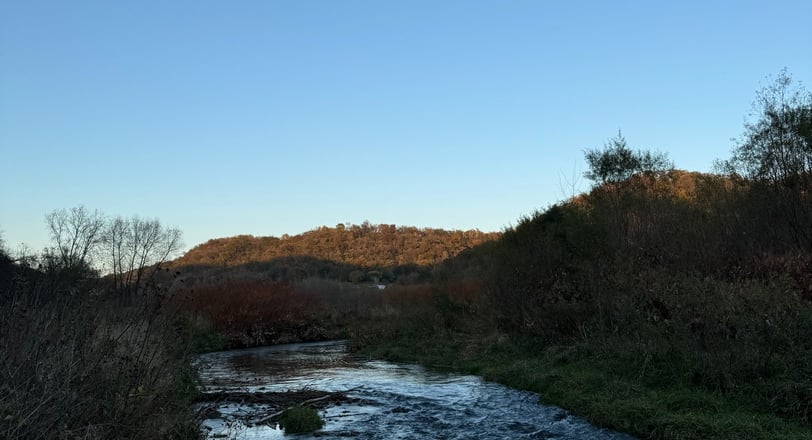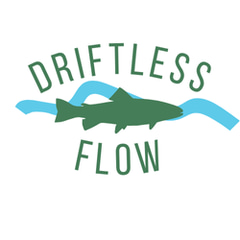How to Fish Iowa Streams in Early Spring: A Comprehensive Guide
HOW-TOS


Finding the Right Water: Identifying Prime Fishing Spots
Identifying the optimal fishing spots in Iowa's streams during early spring involves a combination of pre-season scouting, understanding local water conditions, and monitoring trout behavior as they emerge from winter dormancy. One of the first steps in locating productive fishing waters is to familiarize oneself with the specific streams and rivers in the region. Resources such as Iowa's Department of Natural Resources (DNR) provide valuable information about stocking schedules, stream access points, and recent reports on fish populations.
When evaluating water conditions in early spring, anglers should pay close attention to factors such as water temperature, flow rate, and clarity. A temperature range of 40°F to 55°F is generally ideal for trout fishing, as fish become increasingly active and are more likely to engage in feeding behaviors. Monitoring stream flow, which can fluctuate due to melting snow, rainfall, and water management practices, is crucial. Observing how the current affects the distribution of fish and their foraging habits can inform strategic positioning along the water's edge.
Fish behavior in early spring is notably influenced by insect activity and water temperature. As the days grow longer and warmer, fish tend to congregate in areas where they can access food sources, such as riffles and pools where insects begin to hatch. Fishing near submerged structures, such as fallen trees and rocks, can also yield productive results, as these locations provide cover and rest areas for fish. While scouting your favorite streams, take note of the varying depths and widths of the water, as these can unveil hidden pockets of active trout waiting to be caught.
In addition to public waters, some private streams may offer excellent access for anglers willing to pay for the experience. Many private fishing grounds are well-managed and stocked, providing a higher chance of a successful catch during early spring. By utilizing a combination of local resources, observational techniques, and an understanding of trout behavior, anglers can effectively pinpoint prime fishing spots in Iowa's streams, enhancing their early spring fishing experience.
Effective Fishing Tactics: Techniques for Early Spring Success
Fishing in Iowa streams during early spring presents unique challenges and opportunities, particularly when targeting trout. Understanding and implementing effective fishing tactics is crucial for a successful trip. One of the foremost considerations is the combination of stealth and presentation. Trout in early spring can be skittish due to fluctuating water temperatures and increased angler activity. Approaching the water quietly, minimizing noise, and selecting appropriate gear is essential. Light tackle can enhance your lure's presentation, allowing for more delicate presentations that are less likely to spook fish.
Another important tactic is adapting your methods based on current water conditions. In early spring, streams can vary significantly due to rain and melting snow, leading to different flows and temperatures. Observing the water can help you determine where trout are likely holding. Look for eddies, slower pools, and undercut banks, as these areas provide cover and reduce the effort required for the fish to find food. Reading the water effectively is crucial; areas of turbulence often indicate that baitfish are present, which can attract hungry trout.
In addition to mastering casting techniques, adjusting your fishing approach throughout the day is vital as water temperatures rise or fall. As the day warms, trout may move into shallower waters to feed, necessitating a shift in your fishing location and tactics. Employing varied casting techniques, such as roll-casting or side-arm casting, can help reach those locations without alarming the fish. Using different flies or lures that mimic emerging insects can also increase your chances of success. By following these effective fishing tactics and remaining adaptable, anglers can enhance their early spring fishing experience in Iowa streams.
Choosing the Right Flies: The Best Patterns for Early Spring Trout
Early spring is an opportune time for anglers to target trout in Iowa streams, provided they equip themselves with the appropriate fly patterns. Understanding the preferences and behaviors of trout is essential for selecting effective flies, particularly as water temperatures rise and aquatic insect activity increases. During this season, nymphs, dry flies, and emergers are the most successful patterns, reflecting the diverse life stages of insects available in the water.
For nymphs, patterns such as the Pheasant Tail Nymph and Hare’s Ear are highly recommended, as they mimic the appearance of common early spring insects like mayflies and caddisflies. These nymphs should be fished close to the streambed, where trout are actively feeding. As the day progresses and temperatures rise, hatching activity increases. This is the perfect time to switch to dry flies that match the colors and sizes of emerging insects. Patterns like the Adams or Elk Hair Caddis can produce impressive results when presented effectively on the surface.
Emerger patterns also play a crucial role during this transitional phase, as they mimic insects just beneath the water's surface and are highly attractive to trout. The Soft Hackle and CDC Emerger are notable patterns to consider in early spring. Anglers should also focus on matching their flies to local hatches and current water conditions, adjusting size and color accordingly. Typically, lighter and more natural hues work well in clearer waters, while darker colors can be more effective in murky conditions.
For those interested in fly tying, it is advisable to use high-quality materials to craft realistic representations of target insects. By paying attention to the nuances of size, color, and presentation, anglers can entice more fish and enhance their fly-fishing experience during early spring in Iowa streams.
Important Considerations: Safety, Regulations, and Ethics
Fishing in Iowa’s streams during early spring presents unique opportunities and challenges. Ensuring safety is paramount as weather conditions can rapidly change, leading to unstable water conditions. Anglers should always monitor local weather forecasts before heading out and be prepared for sudden temperature drops or rain. Wearing appropriate gear, such as waterproof clothing and sturdy footwear, is essential for staying dry and maintaining mobility over slippery surfaces. Additionally, possessing a life jacket is advisable if venturing out on larger bodies of water, especially for those who are less experienced.
In tandem with safety, understanding local fishing regulations is critical for compliance and to promote sustainable angling practices. Iowa's Department of Natural Resources outlines specific licensing requirements that must be adhered to before casting a line. All anglers aged 16 and older are required to have a valid fishing license, which can be purchased online or at designated outlets. Furthermore, regulations may dictate specific fishing seasons, as well as limitations on the size and number of fish that can be harvested, particularly concerning local trout populations, which are particularly sensitive during their spawning season. Checking the most recent regulations is advisable as they can change frequently.
Ethical fishing practices are vital for maintaining the ecological balance of Iowa's streams. When practicing catch-and-release fishing, it is essential to handle fish with care, minimizing the time they spend out of water to ensure their survival. Anglers should use barbless hooks and avoid tight lines to reduce injury to the fish. Engaging in responsible fishing not only fosters a sustainable trout population but also contributes to the overall health of the aquatic ecosystem. Respecting these safety measures, regulations, and ethical practices will enhance your fishing experience while promoting responsible stewardship of Iowa's beautiful waterways.
